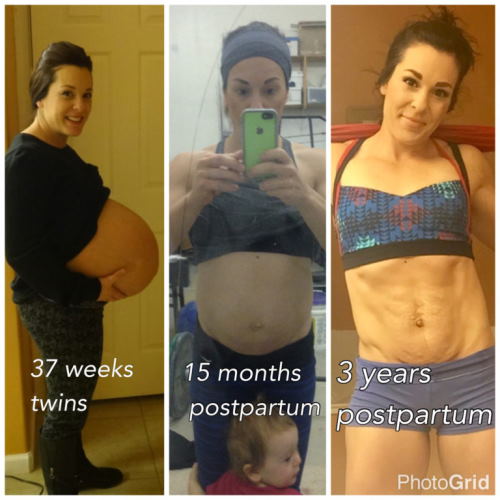Diastasis recti is considered closed, or healed, if the gap in your abdominals – the midline – is less than two finger widths. But as always with women’s bodies, it’s not quite that simple.
The real test to see if your diastasis recti is healed is if you can engage your core during exercise and daily life tasks without doming or coning.
In short, the finger width of your gap matters less than you think. What matters more is how functional your core is throughout day-to-day life.
How Do I Know If I Have Diastasis Recti?
Diastasis recti is often called an ab separation. It is actually not a separation, but a thinning of the linea alba.
The linea alba is the connective tissue that runs between your six pack muscles, more formally called the rectus abdominals. During pregnancy, this connective tissue often thins and widens because of our growing baby. This leaves a gap between the rectus abdominis muscles.

Diastasis recti is common after pregnancy. Approximately 60% of women have an abdominal separation after birth. But we don’t talk about it much.
It only takes a minute to check yourself for diastasis recti.
A gap of 2.7 cm, or approximately “two finger widths” or greater is technically considered diastasis recti.
We often focus on the width of the separation. But you’ll need to check the depth, too.
In fact, research has shown that the depth of the separation could be an even more important indicator for the severity of the condition.
Use the same method you did for checking the width, but instead of checking from side to side, press down toward your spine.
What is Diastasis Recti Coning or Doming?
Diastasis recti coning and doming are often a sign that your abdominal muscles aren’t fully functional–yet.
Coning or doming is simply abdominal pressure pushing out against your thinned connective tissue. Coning usually starts during pregnancy, but could last years postpartum.
Diastasis Recti Coning
Coning often looks like a ridge, cone or football-shape in the midline of your abdomen.

Diastasis Recti Doming
Doming is where your whole tummy protrudes, and looks almost like a bread loaf. This is also a sign of abdominal pressure not being well-managed.

It is possible to cone or dome with a wide separation as well as a narrower or shallower diastasis recti.
If you see coning or doming, it doesn’t mean that exercise needs to be off limits forever. It may mean you need to modify that movement or try to use your breath to engage your deep core.
How Can I Close My Diastasis Recti Gap?
You can absolutely have a fully functional core even if you have a lingering diastasis recti.
The key to healing your diastasis recti is learning how to manage core pressure.
Diastasis recti exercises can help heal your core. SLAM Workouts are loaded with these core exercises and it also helps reconnect your mind with the deep core muscles after pregnancy.
Proper posture can also play a role in diastasis recti healing. Your diaphragm and pelvic floor muscles work together.
When in optimal posture, you can better recruit your deep core and pelvic floor.

Finding a pelvic floor physical therapist is also beneficial after the first six weeks postpartum.
What Does it Mean to Have a “Three Finger Separation” or more?
Having a more severe diastasis recti can feel disheartening. But you can absolutely heal a more substantial gap.
Let’s also note, measuring the width of an abdominal separation isn’t an exact science. The important part is knowing what to do – or not do – while you are working on healing your core.
Having an “X” finger gap means focusing on proper core engagement and deep abdominal exercises.
It also means you may need to avoid high pressure core work like sit-ups, twists, and fully prone exercises like planks.
That said, every body is unique and no exercise is necessarily good or bad when you have diastasis recti.
Watch yourself in a mirror during exercises and monitor for doming or coning. Don’t be afraid to progress and try harder core exercises as you heal and get stronger.
Your core responds to progressive overload!
Proper Core Engagement
Proper core engagement is critical to healing. Engaging your core is very different than sucking in.
When you suck in, it puts pressure on your diaphragm and pelvic floor, and can even be a culprit in pelvic floor dysfunction.
Here’s how to properly engage your core:
- Inhale
Inhale through your nose and fill your ribs and belly with air.
- Exhale
Exhale audibly out your mouth with a “haaaa” or “sssss” noise.
- Lift Pelvic Floor
On the exhale, lift your pelvic floor (like a kegel) and then pull your belly button in and up.
Can Diastasis Recti Heal on its Own?
The good news is that there is a lot of spontaneous healing during the first six months postpartum. Your body is amazing!
But strengthening your core is necessary to continue the healing process, regain strength, and close abdominal gaps.
Healing your postpartum body takes time – a LONG time. And it is possible to fix diastasis recti years later. Proper core training, and a total body approach is the key to healing.

And did you know, everyone has at least a small gap – even men! All bodies need some elasticity in their midline to accommodate eating, bloating, and just living daily life.
Start An Exercise Program
If you are looking to improve your diastasis recti, it is important to start an exercise program that works specifically to heal your core and pelvic floor.
Many fitness programs and personal trainers don’t have the knowledge or qualifications to help with pregnancy and postpartum conditions. The SLAM app guides you through total body workouts that work to heal your body.
